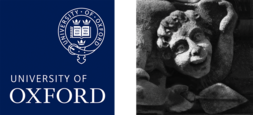Over the past 100 years since J.G. Andersson first brought the prehistoric pottery of Gansu and Qinghai Provinces, China, to the world stage, significant advances have been made in our understanding of Neolithic and Bronze age pottery from that region. From the first typologies produced by Andersson and colleagues to the refinement of chronologies in the 1940s–1990s to the application of modern analytical techniques in the last 20 years, our understanding of both the pottery itself and the people who produced it has been radically transformed. However, up to this point, the history of this research has been scattered across dozens of publications in multiple languages. Here, for the first time, we present a concise history of this work, paired with recent findings from research on newly excavated materials as well as older collections from the Museum of Far Eastern Antiquities (MFEA) and various institutions in China. We hope that this will allow scholars to better understand the trajectory of ceramic research in this field, while also illuminating areas of interest for future research projects.
technology
,Shajing
,Qijia
,Kayue
,China
,Xindian
,Neolithic
,pottery
,Bronze Age
,ceramics
,history of research
,Siwa
,Majiayao



